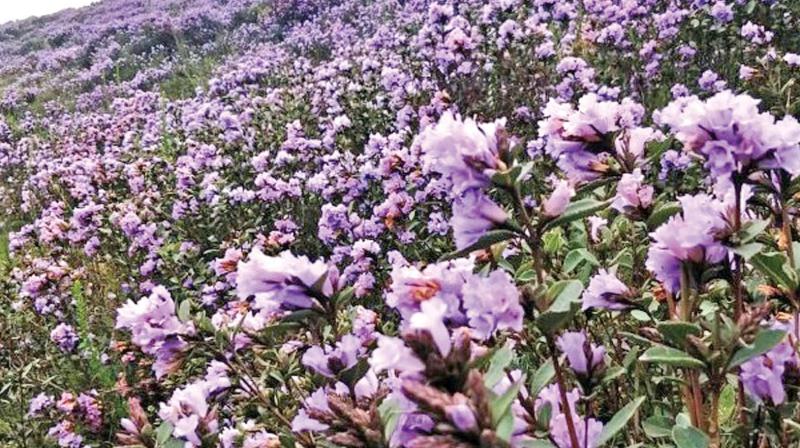Kurinji blooms spread to more areas in Nilgiris
The good bloom of the kurinji' is now a tourist attraction.

Ooty: The bloom of the legendary, rare and ancient flower ‘kurinji’ has begun to spread across the hills here this Southwest monsoon. The bloom which began in Kil-Kotagiri in mid-July and then in other parts of Kotagiri and Coonoor slopes has now begun on the Kallhatti slopes in Ooty suburbs.
In this backdrop, the Nilgiris Documentation Centre (NDC) appealed to the district administration to take steps to study and identify ‘kurinji’ habitats to conserve them for posterity.
It is generally said that the mass blooming of the ‘kurinji’ across the hills in many areas in ancient times gave the Nilgiris hills its name, the Blue Mountains. But, over the decades, its habitat shrank and it is now confined to some patches in the jungle limits.
The good bloom of the ‘kurinji’ is now a tourist attraction. Mr. Dharmalingam Venugopal, NDC director, said that over the years, the area over which it occurs has reduced sharply due to increasing cultivation and spread of tea plantations. In recent years the mushrooming of resorts is posing a major threat.
“The first recorded sighting of ‘kurinji’ in the Nilgiris was 192 years ago to this month when Madras Governor Sir Thomas Munro paid his only visit to the hill in September 1826. There are over 150 of this species in India and the Nilgiris alone claims more than 30 species. Many of the species flower only at long intervals, between six and 12 years usually and there are also some annuals,” he explained.
A systematic record of its blossoming since 1858 on the Nilgiris has been compiled by M.D. Cockburn, the builder of modern Kotagiri who built up a record of 100 years of the blossoming of the flower. His grandfather, one of the earliest white settlers in the Nilgiris, also left records, he noted and added that the time has come to make special efforts to conserve existing ‘kurinji’ habitats in the Nilgiris.

